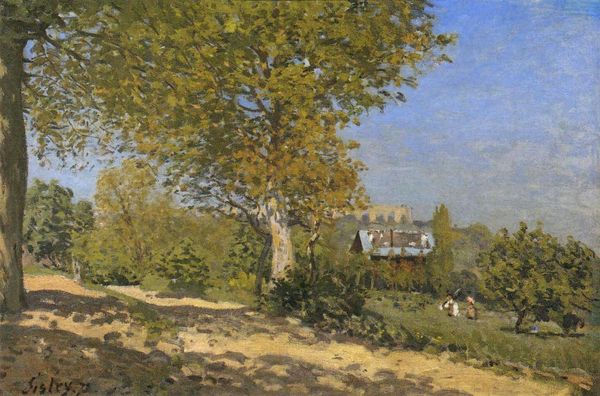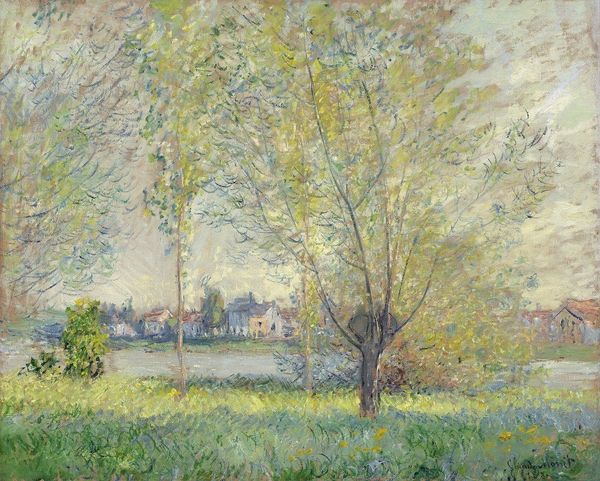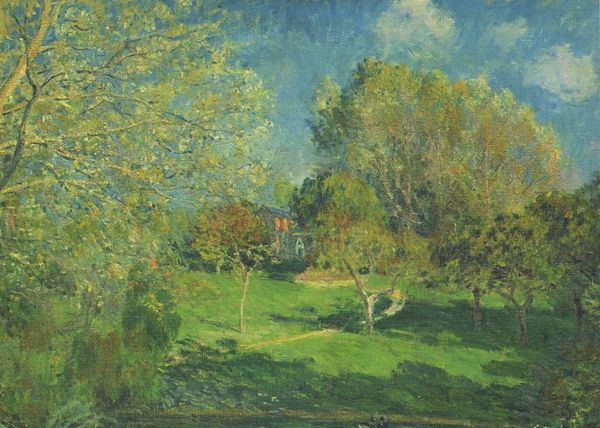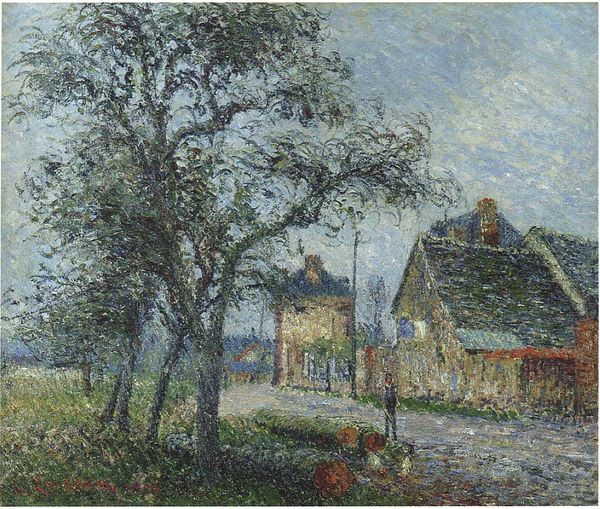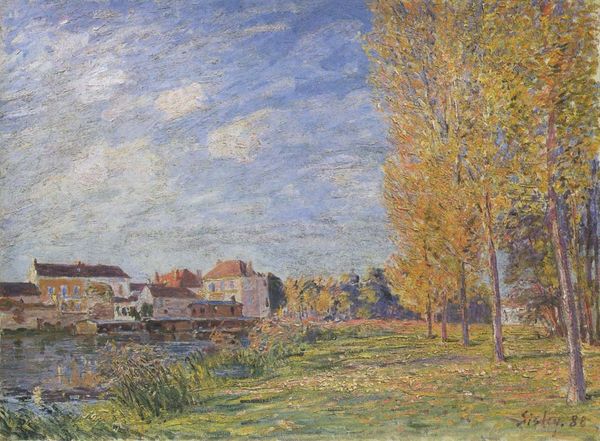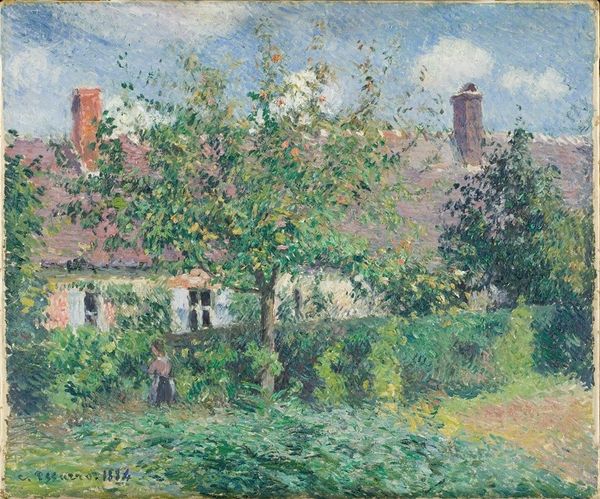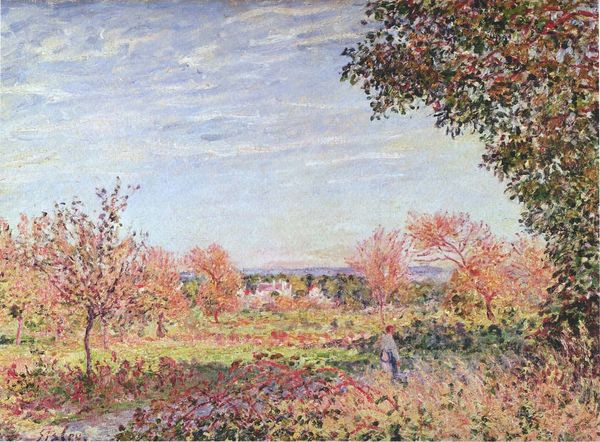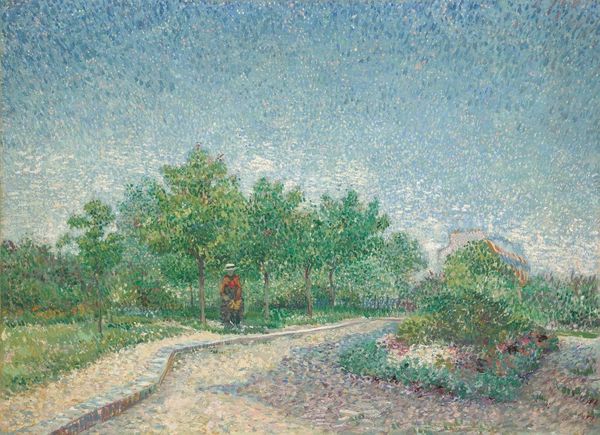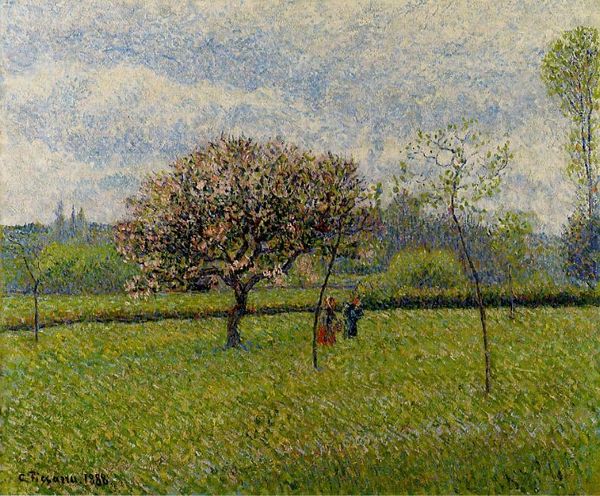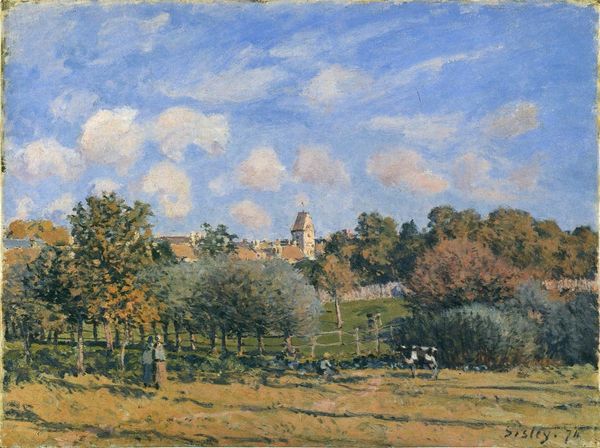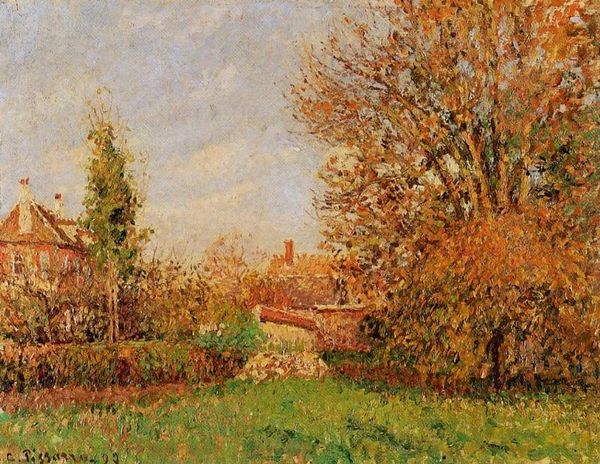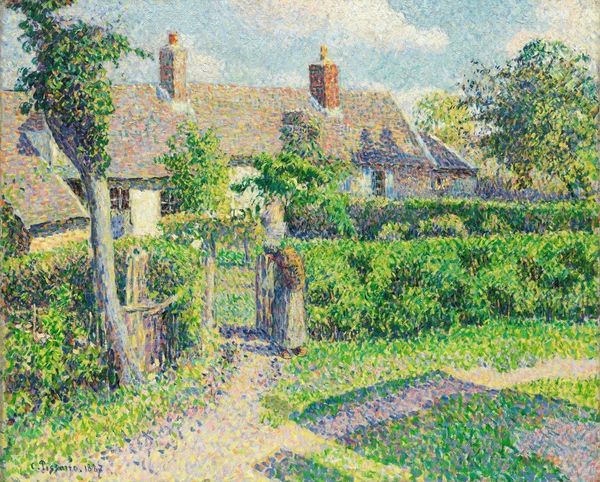
painting, plein-air, oil-paint, impasto
#
tree
#
rural-area
#
painting
#
impressionism
#
impressionist painting style
#
plein-air
#
oil-paint
#
landscape
#
urban cityscape
#
impressionist landscape
#
impasto
#
plant
#
natural-landscape
#
france
#
genre-painting
#
post-impressionism
Dimensions: 54 x 65.1 cm
Copyright: Public domain
Editor: Here we have Camille Pissarro's "Pear Trees and Flowers at Eragny, Morning," painted in 1886 using oil paint. The composition feels very balanced and calm to me. How do you interpret this work? Curator: For me, it's crucial to consider this painting within the context of late 19th-century France, a period marked by significant social and political upheaval. Pissarro's choice of a rural landscape, painted en plein air, can be seen as a deliberate engagement with the rapidly changing world around him. What do you notice about the application of paint? Editor: I see the small, distinct brushstrokes – almost like dots. Curator: Precisely. This Pointillist technique, influenced by scientific theories of color and perception, aligns with the broader artistic exploration of modernity. But beyond the technique, what social narratives might be embedded within this seemingly idyllic scene? Consider who is included and, perhaps more importantly, who is excluded. Editor: It feels... peaceful? Maybe too peaceful, if that makes sense. I mean, you're right; there are no people, no signs of the struggles of the working class, nothing that explicitly hints at those problems. Curator: And that absence, I think, is telling. Is Pissarro offering an escape, or is he subtly commenting on the societal disparities by choosing to depict a world untouched by industrialization and urban chaos? Perhaps it is a bit of both. Editor: So, looking at it through that lens, the painting becomes less about just a pretty landscape and more about a statement, or maybe a question, about the direction society was heading. Curator: Exactly! The piece acts as a space for questioning dominant narratives, and challenges us to think critically about the relationship between art, society, and the construction of meaning. I learned quite a lot from our conversation, looking into social issues through art is something I feel has impact. Editor: Absolutely, this really changed my perspective on the piece!
Comments
No comments
Be the first to comment and join the conversation on the ultimate creative platform.

